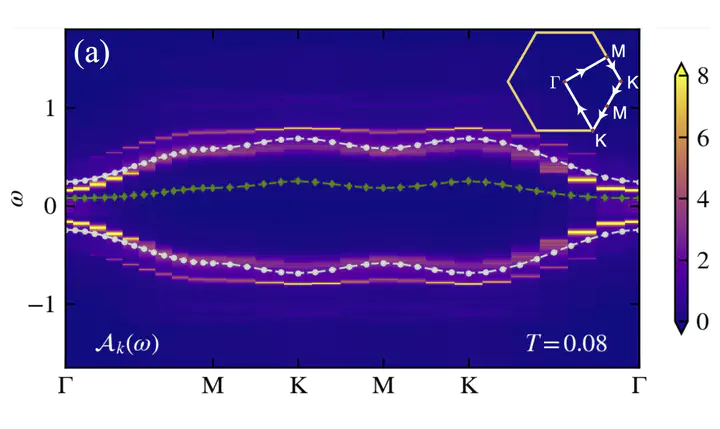Exciton Proliferation and Fate of the Topological Mott Insulator in a Twisted Bilayer Graphene Lattice Model

Abstract
A topological Mott insulator (TMI) with spontaneous time-reversal symmetry breaking and nonzero Chern number has been discovered in a real-space effective model for twisted bilayer graphene (TBG) at 3/4 filling in the strong coupling limit. However, the finite temperature properties of such a TMI state remain illusive. In this work, employing the state-of-the-art thermal tensor network and the perturbative field-theoretical approaches, we obtain the finite-T phase diagram and the dynamical properties of the TBG model. The phase diagram includes the quantum anomalous Hall and charge density wave phases at low T, and an Ising transition separating them from the high-T symmetric phases. Because of the proliferation of excitons—particle-hole bound states—the transitions take place at a significantly reduced temperature than the mean-field estimation. The exciton phase is accompanied with distinctive experimental signatures in such as in charge compressibilities and optical conductivities close to the transition. Our work explains the smearing of the many-electron state topology by proliferating excitons and opens an avenue for controlled many-body investigations on finite-temperature states in the TBG and other quantum moire ́ systems.